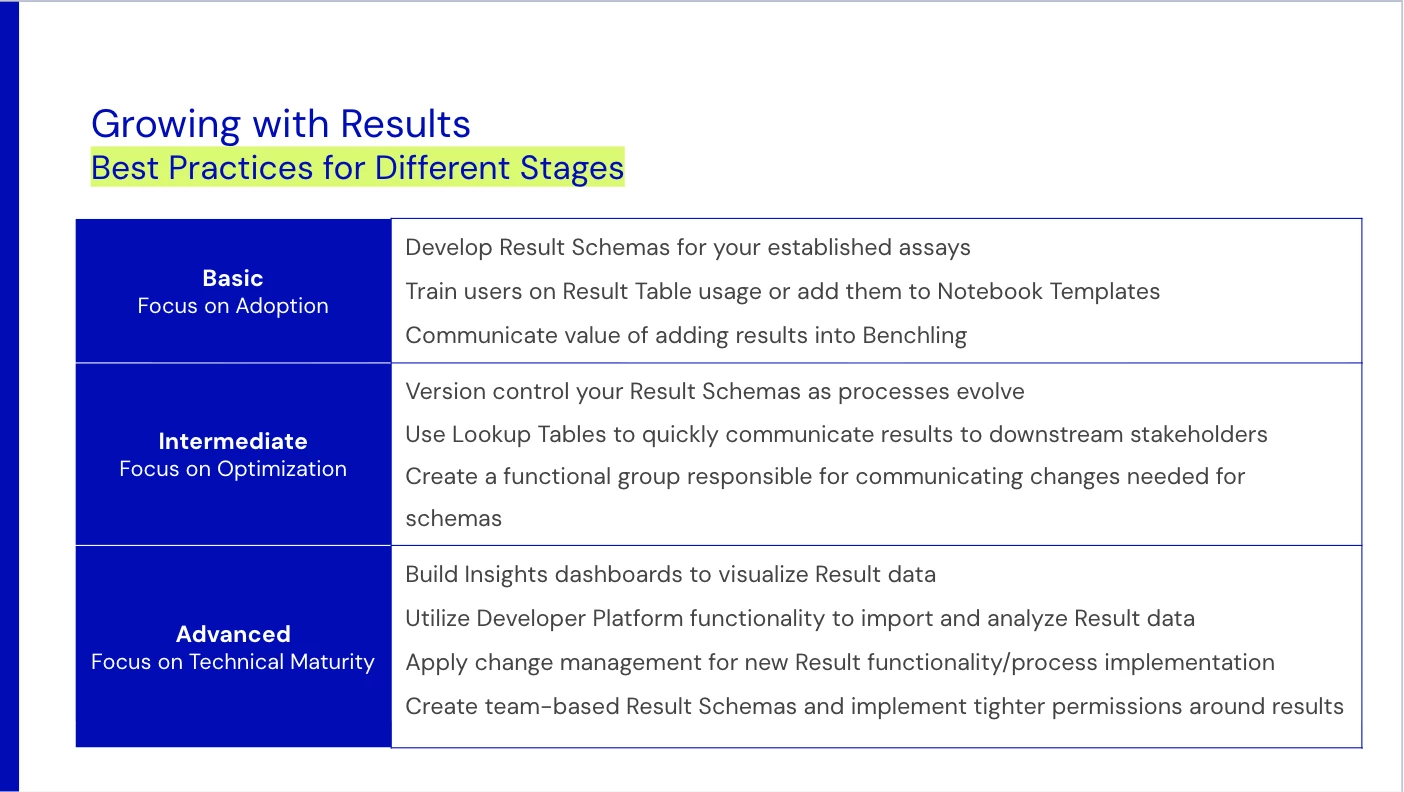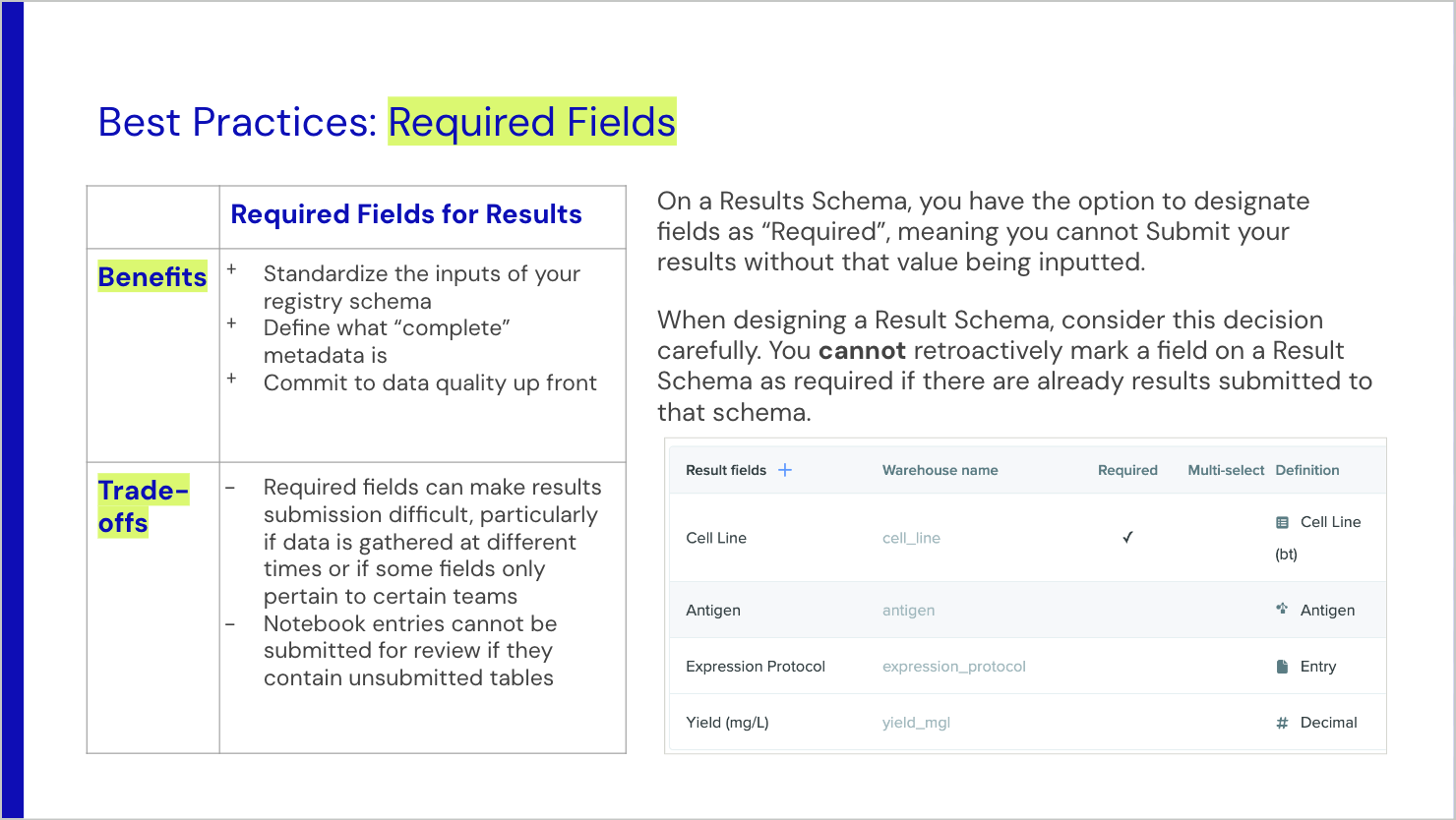If you’ve ever struggled to get value out of Results in Benchling or figure out when you should be using them in the first place, this is the resource for you! We’ve broken down the key components of Results, where they should be added, and gathered some resources on the tactical aspects of setting them up.
Our Results Best Practice Guide (or BPG) covers:
- Benefits of Leveraging Results - Results will allow you to capture data in a structured and compliant way and can help you speed up analysis downstream
- How Results affect your Registry - Results are associated with registered entities or containers
- Best Practices: Using Results vs Registry - Results are best used for capturing multiple measurements after the time of entity registration
- Best Practices for Results Against Containers - Capture results against containers when you’re working with unique storage conditions, plates, or other situations where container variability is important
- Best Practices for Results in Templates - Prompt your scientists to capture results in a standardized way by adding a Result Table into a Template--you can even add directions on how to fill out the table properly
- Growing with Results - Results are a tool that can grow with you as you mature – previewed below (see image 1) are our suggestions for how to use results as your operational maturity grows
Full BPG attached below!
And be sure to join the conversation to let us know how you’re using Results or where you might be struggling! 😃🙃

Looking for more best practices? You can keep skilling up on other Benchling modules by checking out our other Best Practice Guides on data modeling, templates and more.




